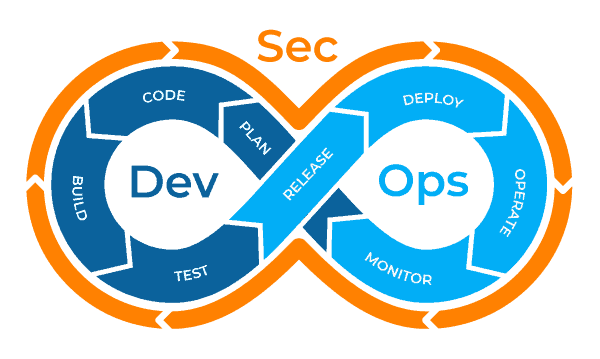Introduction #
In today’s fast-paced software development environment, security can oftentimes be an afterthought. Organizations that treat security as a separate phase conducted after development find themselves facing costly vulnerabilities, compliance issues and possible reputation damage. This problem is what DevSecOps aims to solve: a philosophy and set of practices that integrates security into every stage of the development lifecycle.

What is DevSecOps? #
DevSecOps (short for Development, Security, and Operations) is an evolution of the DevOps movement that emphasizes the importance of building security into applications from day one. While DevOps focuses on breaking down silos between development and operations teams to deliver software faster, DevSecOps extends this concept by embedding security practices throughout the entire pipeline.
The core principle is simple, yet powerful: Security is everyone’s responsibility (not just the security team’s).
The Traditional Problem #
Traditionally, security has been implemented using a “bolt-on” approach:
- Developers write code
- Operations teams deploy it
- Security teams assess it afterward
This workflow creates several critical issues:
- Delayed Feedback: Security vulnerabilities are discovered late in the development cycle when they’re more expensive to fix
- Bottlenecks: Security reviews become a bottleneck, slowing down releases
- Friction: Security is viewed as an impediment rather than a value-add
- Limited Ownership: Developers don’t feel responsible for security outcomes
Key Components of a DevSecOps Practice #
1. Shift-Left Security Testing #
The “shift-left” concept moves security testing earlier in the development lifecycle. Instead of waiting until code is complete, security checks happen continuously:
- Static Application Security Testing (SAST) analyzes source code for vulnerabilities during development
- Software Composition Analysis (SCA) scans dependencies for known vulnerabilities
- Interactive Application Security Testing (IAST) identifies vulnerabilities during testing phases
2. Security as Code #
Just as Infrastructure as Code (IaC) revolutionized operations, security as code brings automated, reproducible security controls:
# Example: Security policy as code using OPA (Open Policy Agent)
package httpapi.authz
default allow = false
allow {
input.method == "GET"
input.path == ["public", "health"]
}
allow {
input.method == "GET"
input.path = ["users", user_id]
input.user == user_id
}
3. Automated Compliance Verification #
Compliance requirements can be codified and automatically verified using tools like InSpec:
# Example: Automated compliance check using InSpec
inspec exec compliance-profile -t ssh://user@host --reporter cli json:output.json
4. Threat Modeling Automation #
Threat modeling shifts from manual exercises to automated processes integrated with development workflows:
# Example: Threat Dragon threat model definition
{
"summary": {
"title": "Payment Processing Component",
"owner": "Payment Team"
},
"threats": [
{
"id": "1",
"title": "Attacker could intercept payment details in transit",
"status": "Open",
"severity": "High",
"mitigations": "Implement TLS 1.3 and certificate pinning"
}
]
}
5. Security Monitoring and Observability #
Runtime security monitoring provides the final layer of defense:
- Application-level monitoring to detect unusual patterns
- Runtime Application Self-Protection (RASP)
- Container and infrastructure security controls
Implementing DevSecOps: A Practical Roadmap #
Step 1: Assess Current State #
Before implementing DevSecOps, assess your organization’s security maturity:
- Evaluate existing security tools and practices
- Identify security knowledge gaps in development teams
- Document current software delivery lifecycle
- Determine compliance requirements
Step 2: Build Security Champions Network #
Security champions act as bridges between development and security teams:
- Identify security-minded individuals within development teams
- Provide specialized security training
- Create channels for security knowledge sharing
- Recognize and reward security contributions
Step 3: Implement Basic Security Gates #
Start with high-impact, low-friction security controls:
- Configure pre-commit hooks for secret detection
- Implement basic SAST in CI/CD pipelines
- Scan dependencies for known vulnerabilities
- Automate compliance checks for critical requirements
Step 4: Enhance Developer Security Knowledge #
Security-aware developers are the foundation of DevSecOps:
- Provide secure coding training tailored to your tech stack
- Create language-specific security guidelines
- Run gamified security exercises (e.g., capture the flag)
- Establish security code review guidelines
Step 5: Create Feedback Loops #
Continuous improvement requires effective feedback mechanisms:
- Track security metrics (e.g., vulnerabilities found/fixed, mean time to remediate)
- Implement blameless security incident reviews
- Collect developer feedback on security tools
- Regularly reassess security requirements
Real-World DevSecOps Pipeline Example #
A mature DevSecOps pipeline might look like this:
Common Challenges and Solutions #
Challenge 1: Developer Resistance #
Solution: Focus on the developer experience. Security tools should be fast, produce minimal false positives, and integrate seamlessly with existing workflows.
Challenge 2: Tool Overload #
Solution: Start small with integrated tooling. Choose platforms that consolidate multiple security checks rather than implementing separate tools for each function.
Challenge 3: False Positives #
Solution: Tune tools for your environment and implement a feedback loop for improving detection rules over time.
Challenge 4: Speed vs. Security Trade-offs #
Solution: Implement risk-based approaches that apply appropriate security controls based on the sensitivity and risk profile of each application.
Measuring DevSecOps Success #
Effective metrics help track DevSecOps maturity:
- Mean Time to Remediate (MTTR): Average time from vulnerability detection to fix
- Security Debt: Number and age of unresolved security issues
- Automated Test Coverage: Percentage of code covered by security tests
- Security Defect Escape Rate: Vulnerabilities found in production vs. development
- Developer Security Engagement: Participation in security training and activities
Conclusion #
DevSecOps isn’t just a set of tools or a team structure – it’s a cultural shift that recognizes security as an essential quality attribute of software, just like performance or usability. By embedding security throughout the development lifecycle, organizations can deliver secure software faster, reduce costs, and build security-minded development cultures.
The journey to DevSecOps maturity is continuous, but even small steps toward integrating security into development workflows can yield significant benefits. Start small, focus on the developer experience, measure your progress, and continuously improve your practices.
Remember: in DevSecOps, security isn’t something you do retroactively – it’s something you build in & maintain.

